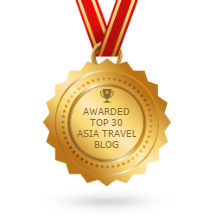Essential Tips to Know Before Your Journey to Vietnam
Vietnam is one of Southeast Asia’s most captivating destinations, known for its rich history, breathtaking landscapes, delicious cuisine, and warm hospitality. From the bustling streets of Hanoi to the peaceful rice terraces of Sapa and the sun-kissed beaches of Da Nang, the country offers something for every traveler. Before setting off, it’s important to be prepared so you can make the most of your trip and avoid unnecessary stress.
Visa and Entry Requirements
Before traveling, check whether you need a visa for Vietnam. Many travelers can apply online for an e-visa, which is quick and convenient. However, the rules can vary depending on your nationality, so always verify the latest requirements. Having your documents prepared in advance will ensure a smooth arrival at the airport or land border.
Currency and Payments
The official currency in Vietnam is the Vietnamese Dong (VND). While larger hotels and some restaurants in big cities accept credit cards, cash is still the most common method of payment, especially in smaller towns and markets. ATMs are widely available, but it’s wise to carry some local currency for small purchases like street food or taxi rides.
Language and Communication
Vietnamese is the official language, and while English is spoken in tourist areas, it’s less common in rural regions. Learning a few basic Vietnamese phrases such as “thank you” (cảm ơn) or “hello” (xin chào) can go a long way in showing respect and building connections. Downloading a translation app is also useful for easier communication.
Local Customs and Etiquette
Vietnamese culture values respect and politeness. When visiting temples or pagodas, dress modestly by covering your shoulders and knees. Removing shoes before entering homes or sacred sites is customary. A smile and gentle tone are appreciated in daily interactions, and bargaining in markets is expected but should be done politely.
Transportation and Getting Around
Vietnam’s cities are known for their chaotic traffic, especially with the endless stream of motorbikes. Crossing the street may feel intimidating at first, but moving slowly and steadily while keeping an eye on the flow usually works best. Domestic flights, trains, and buses are affordable options for traveling between regions, while motorbike rentals are popular for local exploration—just make sure you’re comfortable with the traffic conditions.
Food and Drinking Water
Vietnamese cuisine is a highlight of any trip, from savory pho and banh mi to fresh spring rolls. Street food is not only delicious but also safe if you choose busy stalls with high turnover. Drinking tap water is not recommended, so stick to bottled or filtered water. Many hotels and cafes also offer free refills in reusable bottles, making it easier to stay hydrated and reduce plastic waste.
Health and Safety
Travel insurance is highly recommended when visiting Vietnam. Pharmacies are easy to find in cities, but carrying basic medicine is helpful when traveling to rural areas. Be mindful of petty theft in crowded places—keeping your belongings secure and using a money belt can prevent unwanted issues.
Conclusion
Traveling to Vietnam is an unforgettable experience filled with vibrant culture, natural beauty, and welcoming people. By preparing in advance—whether it’s learning about visas, understanding local customs, or knowing how to get around—you’ll be ready to fully enjoy the adventure. With an open mind and a little preparation, your journey through Vietnam will be as smooth as it is memorable.








